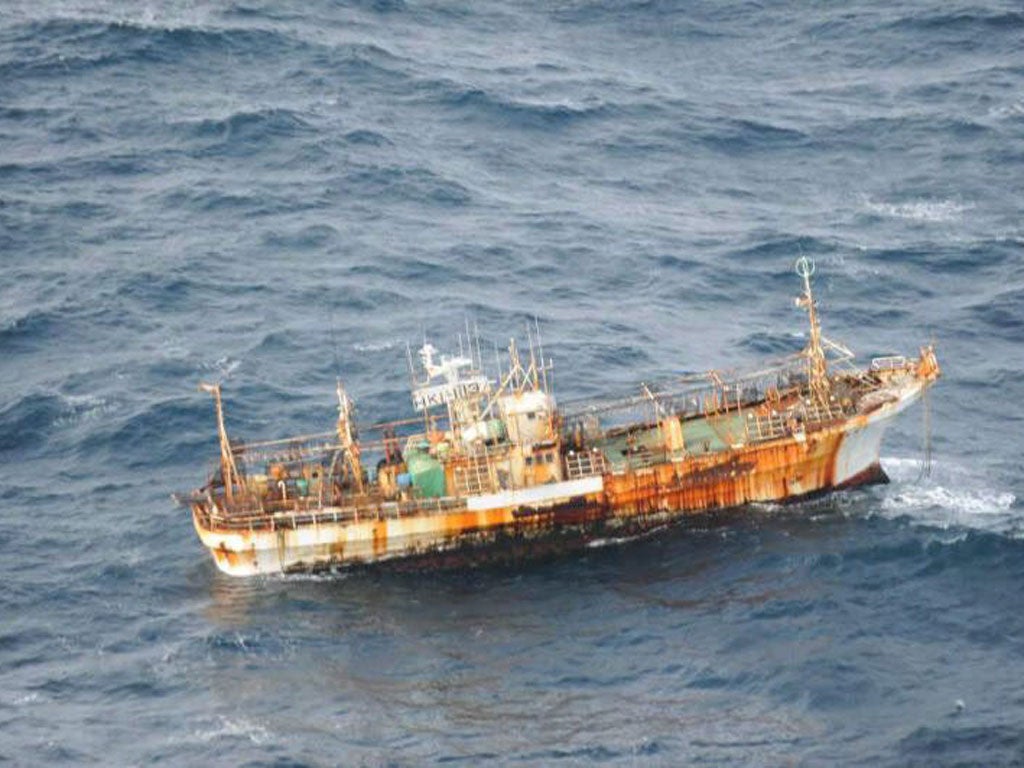Your support helps us to tell the story
From reproductive rights to climate change to Big Tech, The Independent is on the ground when the story is developing. Whether it's investigating the financials of Elon Musk's pro-Trump PAC or producing our latest documentary, 'The A Word', which shines a light on the American women fighting for reproductive rights, we know how important it is to parse out the facts from the messaging.
At such a critical moment in US history, we need reporters on the ground. Your donation allows us to keep sending journalists to speak to both sides of the story.
The Independent is trusted by Americans across the entire political spectrum. And unlike many other quality news outlets, we choose not to lock Americans out of our reporting and analysis with paywalls. We believe quality journalism should be available to everyone, paid for by those who can afford it.
Your support makes all the difference.It's big, rusty and, at its current rate of progress, you can expect it to wash ashore somewhere north of Vancouver in roughly 50 days' time. Coastguards in British Columbia are monitoring a Japanese fishing vessel that was apparently swept away by last year's tsunami and is now about 120 miles north of Canada's Haida Gwaii islands.
Thought to be a squid-fishing boat, the craft is in the vanguard of what is expected to be a huge amount of tsunami debris heading Canada's way. It has now travelled more than 4,700 miles. Having established that no one is on board, Canadian officials have posted a maritime warning, suggesting that it could pose a navigational hazard in congested coastal waters.
The ship's progress is also being closely watched by US authorities, who say they have seen small items of debris begin to hit beaches in the Pacific north-west in recent months. "This 150ft fishing vessel is the first major West Coast tsunami debris confirmed by Japanese officials," said Maria Cantwell, a Democratic senator from Washington state. "Coastal residents need to know who is in charge of tsunami debris response. We need clearer answers now."
The name of the stricken ship, which hails from the coastal city of Hokkaido, remains unknown, but it represents the first of what scientists reckon to be many major pieces of debris from the March 2011 disaster approaching the coastline of North America. Between 20 and 25 million tons of rubbish were washed into the sea by the tsunami, of which anywhere from one to two million tons are thought to still be floating around the Pacific Ocean. Most of that debris is on course to hit land over the next two years.
There is little chance of any debris being contaminated by radiation, apparently. The debris came from a large swath of Japan's north-eastern coast, of which the tsunami-damaged nuclear power plant in Fukushima occupies only a small area. Further, it was dragged out to sea with the tsunamis, before the Fukushima plant experienced multiple meltdowns. But environmentalists are concerned that nets and other fishing equipment could endanger wildlife. Plastic waste may end up being broken down into small pieces which can be ingested by fish and birds. Larger items may also threaten the safety of boats navigating coastal waters.
Japanese officials have asked authorities to check floating debris for photographs and other personal items which might be returned to families of victims of the tsunami.

Join our commenting forum
Join thought-provoking conversations, follow other Independent readers and see their replies
Comments